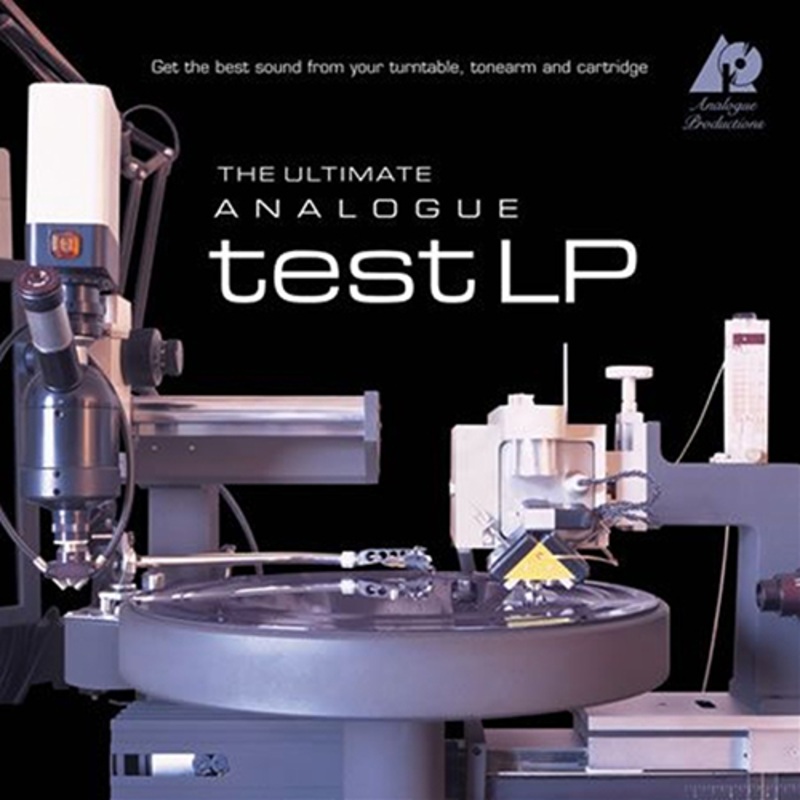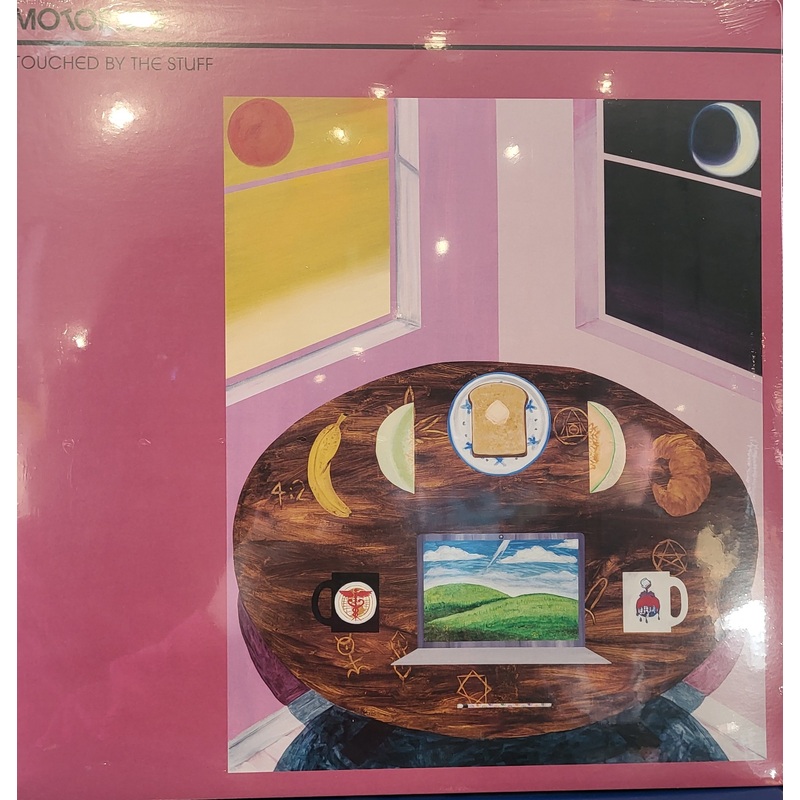Ultimate Analog Test LP Analogue Productions Test Vinyl LP Roxy Disc House
The Longstanding Reference in Test Discs: Analogue Productions' Award-WinningThe Ultimate Analog Test LPIs True to Its Name, Includes Tracks to Adjust Azimuth, VTA, Frequency, and MoreAnalogue Productionsset out to produce theultimate test record. And suff
The Longstanding Reference in Test Discs: Analogue Productions’ Award-WinningThe Ultimate Analog Test LPIs True to Its Name, Includes Tracks to Adjust Azimuth, VTA, Frequency, and MoreAnalogue Productionsset out to produce theultimate test record. And suffice it to say, the company succeeded. It consulted many experts in the field, including mastering engineers, audio experts, turntable experts, and audiophile listeners, to create a test record that would stand the test of time.Most test records in the past have been made to test a variety of equipment.The Ultimate Analog Test LPexcludes silly cannon shots, typewriters, voices on one channel, and other useless fluff. Rather,The Ultimate Analog Test LPspecifically addresses your turntable and cartridge. Its designed to provide the basic test signals necessary to calibrate a turntable or cutting lathe as simply as possible. Please see below for all of the specific adjustment, reference, and test tracks that cover everything from azimuth to VTA to frequencies.Mastered and cut on a Neumann VMS 80 lathe at Sterling Sound and pressed at QRP on high-quality, 200-gram virgin vinyl, this is a must-have for everyone with a turntable.Amazingly well-conceived as well as manufactured to the highest standards,The Ultimate Analog Test LPis the new reference is test discs.The Absolute Sound, Editors Choice AwardSide 1General Reference LevelThis 1 kHz reference tone will allow you to establish a base level for all measurements.Track 1 1Khz reference tone 7cm/s Mono, in phase (Lateral)Basic reference for all measurements, adjust meter for maximum convenience (in the studio 0VU).Adjust preamp channel balance for equal output.Also used to check the offset angle of the photo cartridge; L&R signals should be exactly in phase as displayed on an oscilloscope.Azimuth AdjustmentTrack 2 1kHz reference level Left channel onlyMeasure Right channel output.Track 3 1kHz reference level Right channel onlyMeasure Left channel output.The object is to sit the stylus exactly perpendicular in the groove.Twist cartridge about its radial axis until the measurements from Track 2 and Track 3 are equal or very close to equal for both channels.High Frequency AdjustmentTracks 4, 5 and 6 are used to calibrate the RIAA high frequency equalizer of a phono preamp. This will be used to calibrate a mastering lathes phono preamplifier or any phono preamplifier that has these adjustments.Track 4 1 kHz tone at -20 below reference level, LateralReference for High Frequency test.Track 5 10 kHz reference tone at -20dbu, LateralAdjust the high frequency until the output level equals that of Track 4.Track 6 1 kHz to 20 kHz sweep at -20dbu, Mono (Lateral)The AC millivoltmeter reading should stay constant across all frequencies. There are a number of factors which can affect frequency response, including cable capacitance, cartridge loading, tracking force and worn parts. Because of this, it can be difficult to achieve perfectly flat frequency response. Sometimes by making small compromises in the 10 kHz adjustment, a better overall frequency response can be achieved.Low Frequency AdjustmentTracks 7 & 8 are used to calibrate the RIAA low frequency equalizer of a phono preamp.Track 7 1 kHz to 20 Hz sweep at 0 VU (Lateral)Play Track 7 and measure the output with your AC millivolt meter.Ideally, the output will be flat across all frequencies. When viewed on an oscilloscope, the amplitude would remain constant during the frequency downsweep.Track 8 100 Hz reference tone at 0 vu (Lateral)Adjust LF Eq to reference (which is your reading from Track 1).Track 9 VTA adjustThis is an IEC intermodulation distortion (IMD) test signal; 60Hz & 4kHz 4:1 ratio.Using an IMD tester, adjust VTA by raising or lowering the tonearm for minimum distortion.Track 10 Standard Wow & Flutter testsignal; 3150HzThe Wow & Flutter meter will give dynamic speed variations as a percentage deviation from nominal.Also, the frequency counter should read exactly 3150 Hz for nominal speed. You can use the Hz function on your multi-meter (if so equipped) to verify speed here as well. You can also use to find the measurements at 45RPM. The correct reading at 45RPM would be 4253 Hz (45/33.33) x 3150.Side 2Track 1 Anti-skating test;315Hz amplitude sweep to +12dbu (Lateral)Signal should remain clean in both channels up to the highest level, both audibly and as viewed on an oscilloscope. In case of distortion, increase anti-skating force or decrease anti-skate until breakup occurs equally in both channels. The left channel information is inscribed on the inner groove wall, the right channel information, on the outer groove wall. Because of the offset angle of a pivoted tonearm, a constantly varying vector force biases the arm towards the center of the record causing the stylus to lose contact with the outer (i.e. right channel) groove wall. Both linear and modulated groove velocity, tracking force, stylus profile, and vinyl composition are contributing factors. The anti skating force attempts to ameliorate this by applying an opposing similar force.It is also accepted that the overall force vector increases as the tonearm approaches closer to the spindle or end of the record.Track 2 Pink noise lateralTrack 3 Pink noise verticalUsed for cartridge demagnetizingYou can also use this track to loosen up the cantilevers suspension to help break in a new cartridge. Play these tracks five to ten times after every 300 hours of normal LP playback.Track 4 1kHz @ reference level, verticalThis out-of-phase signal should cancel to nothing when summed to mono.Any signals still present are distortion artifacts, lack of channel balance, or timing (phase) anomalies. This test can be a second confirmation of anti-skate adjustment.Track 5 1kHz to 10Hz sweep @ -20 below reference level, verticalResonance anomalies in the tonearm / cartridge interface will show up as amplitude peaks and dips as the frequency sweeps down.Once again, by listening in Mono it is easier to hear the distortion artifacts.Track 6 Silent groove for bearing rumble and table isolationDuring playback of this track, nothing should be transmitted from the turntable to the speakers. Replay the track and gently tap on the rack or base that the turntable is resting on. There should be little or no thump transferred to the speakers. This track will help you experiment with turntable isolation methods and products to be able to get the most out of your playback system. You may want to use a closed or sealed headphone for best listening results, or a stethoscope on the plinth.






Reviews
There are no reviews yet.